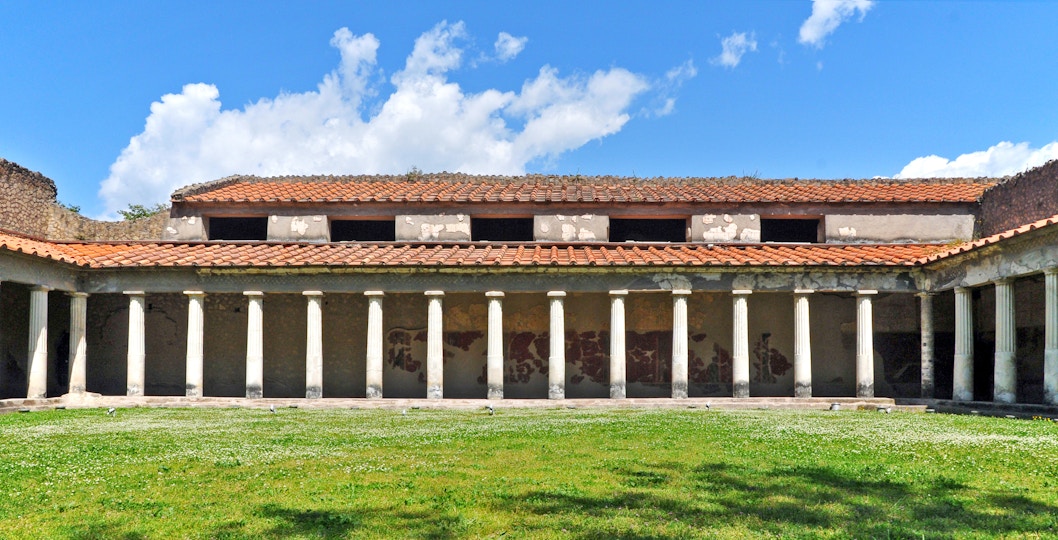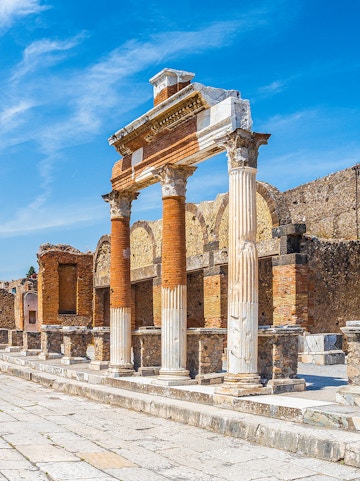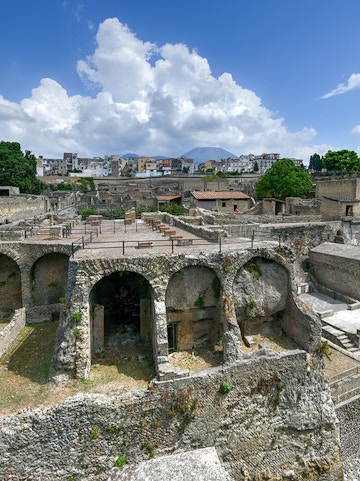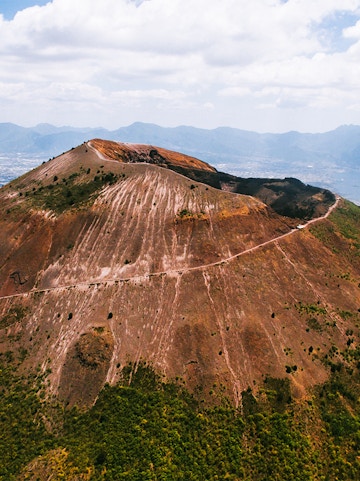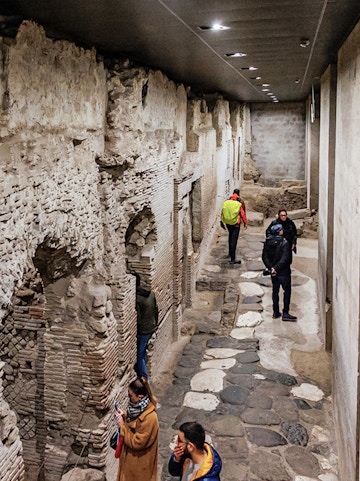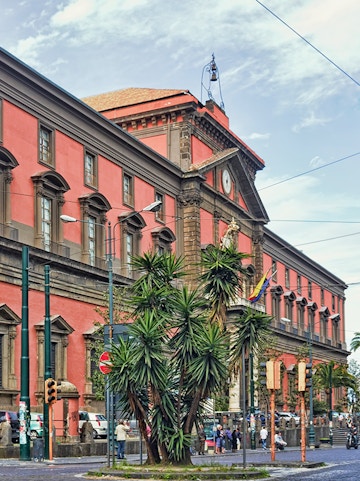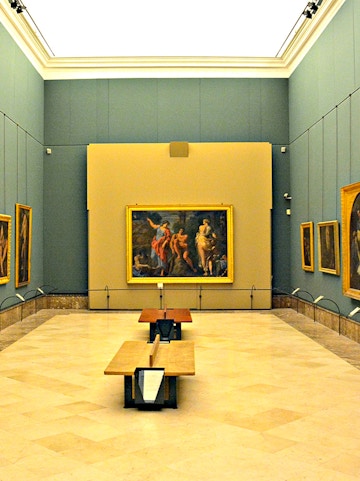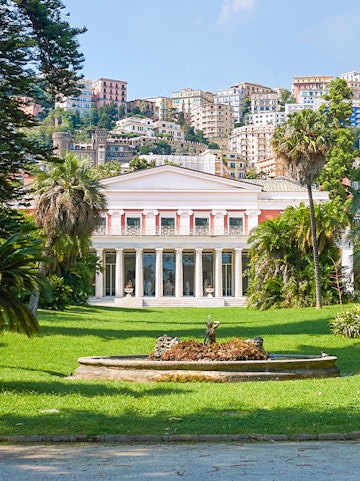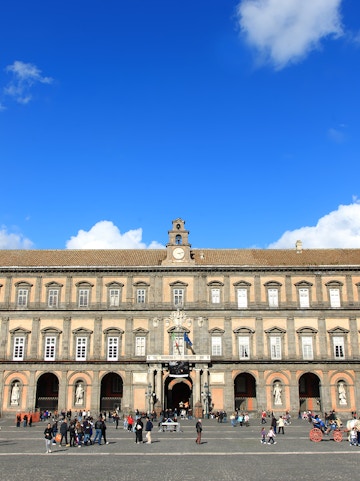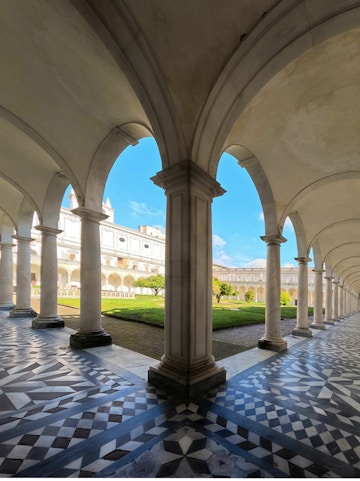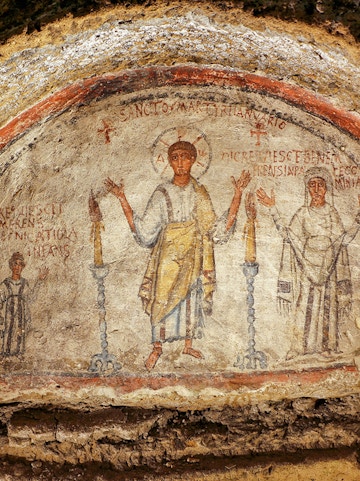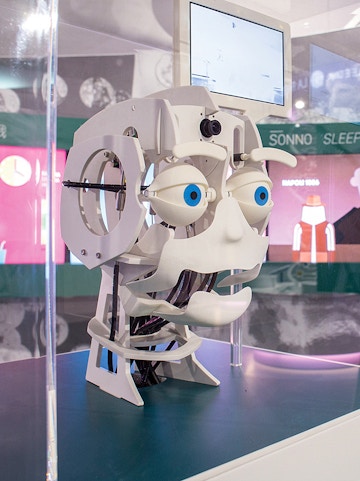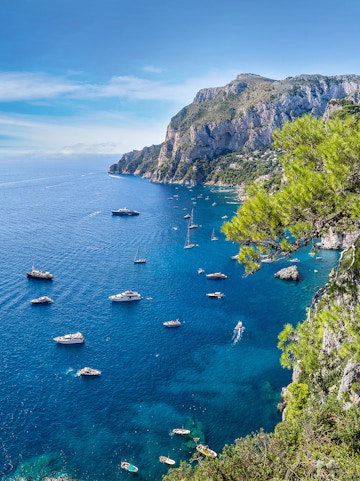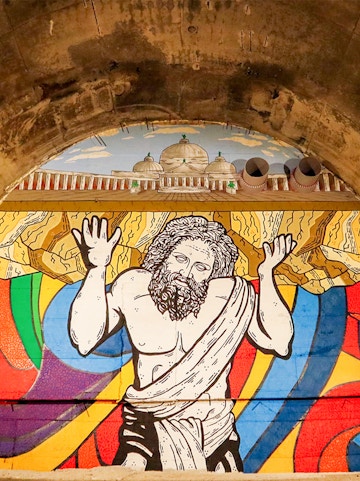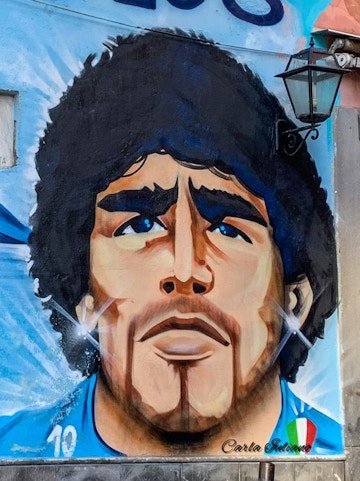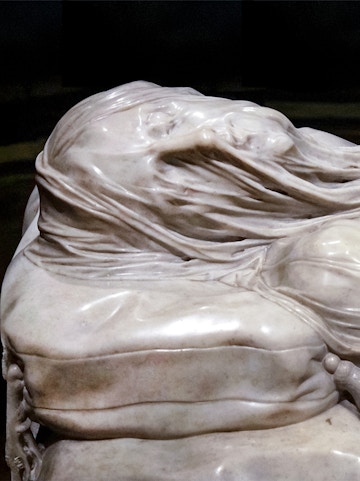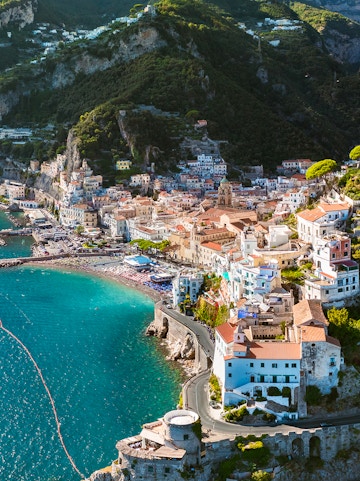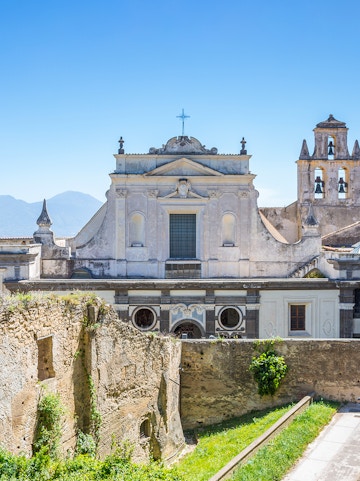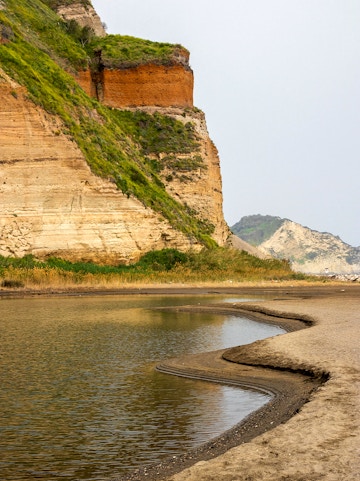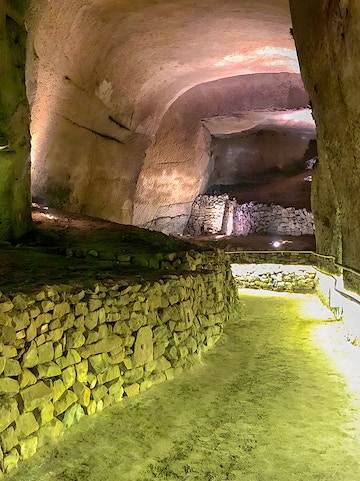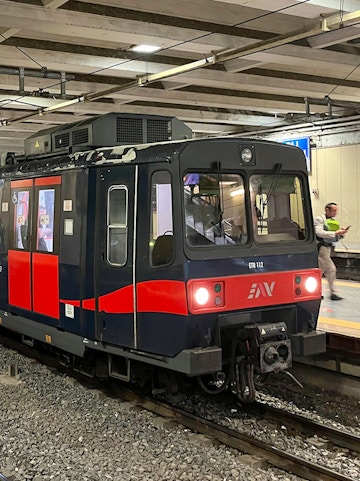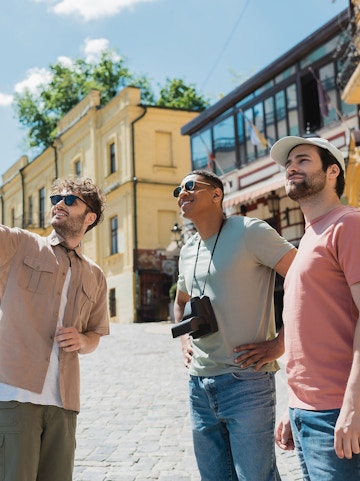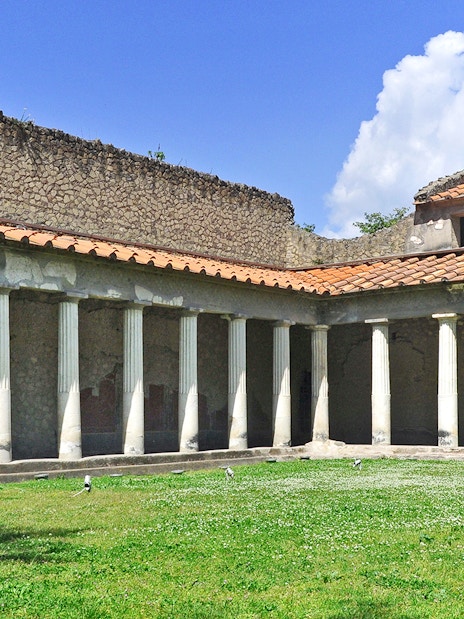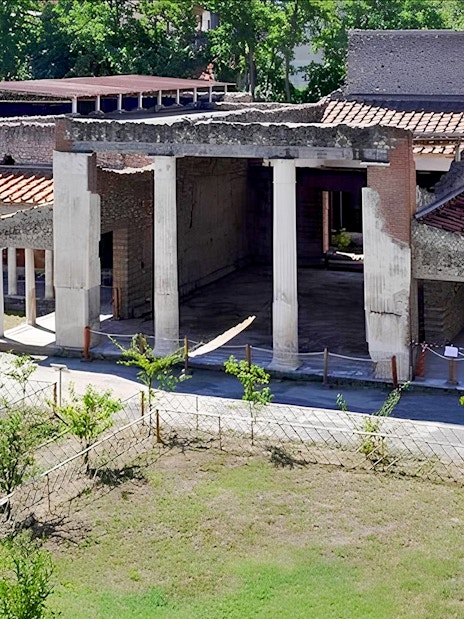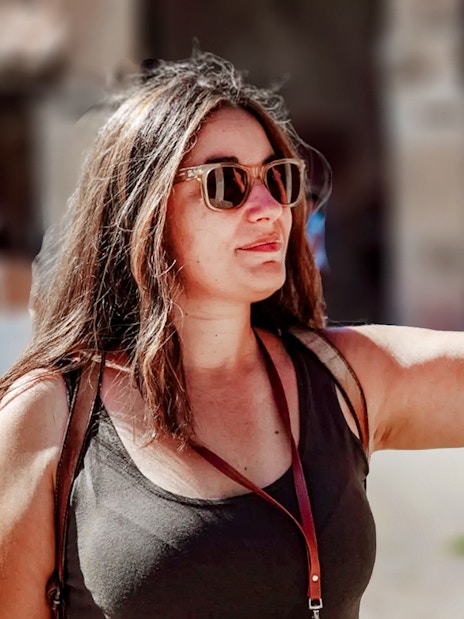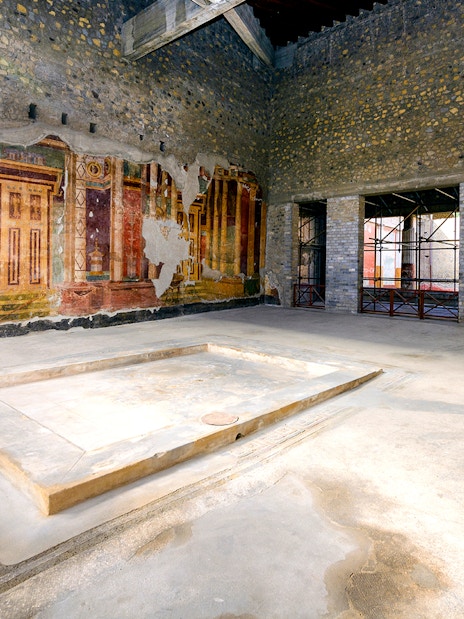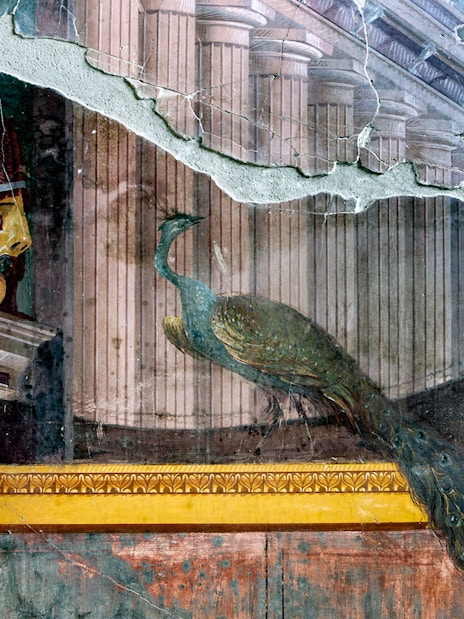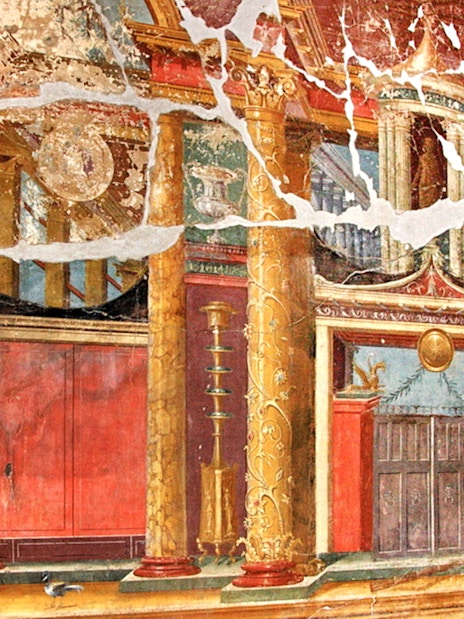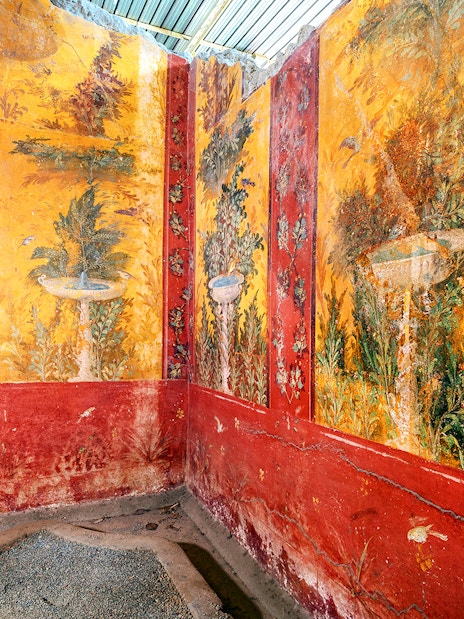- Discover a key trade hub: Oplontis provides insight into Roman commerce, with hundreds of amphorae and evidence of ancient trade activity.
- Easy access from Naples or Pompeii: Located in Torre Annunziata, Oplontis is just a short train ride away, making it an ideal addition to a Vesuvian ruins itinerary.
- Admire stunning frescoes: View some of the best-preserved wall paintings from ancient Rome, featuring vivid colors, mythological scenes, and illusionistic designs that bring the villa to life.
- See aristocratic Roman architecture: Explore the lavish Oplontis, with its grand colonnades, elegant courtyards, and an enormous swimming pool, which showcase elite Roman luxury.
- Experience a crowd-free site: Unlike Pompeii and Herculaneum, Oplontis offers a peaceful and immersive atmosphere, letting you explore at your own pace.
Oplontis Tickets
Headout is an authorized and trusted partner of the venue, offering curated experiences to enjoy this attraction. This is not the venue's website.
